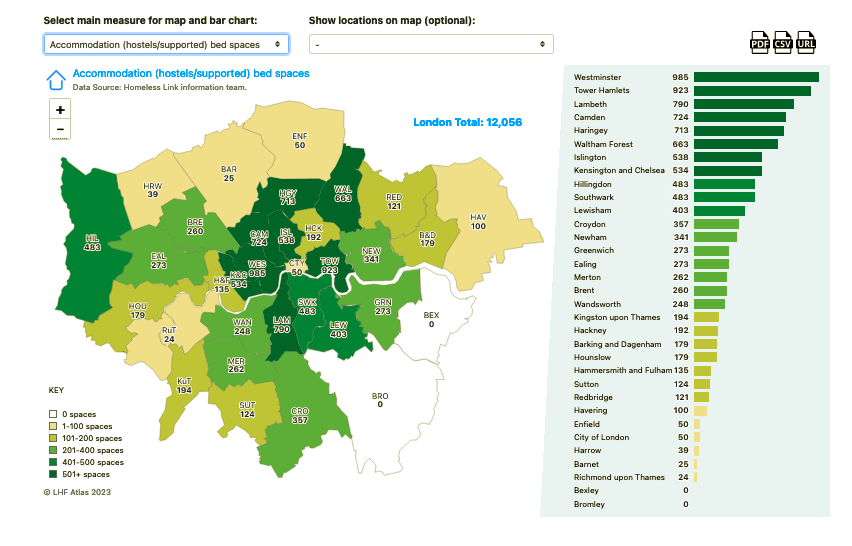
There is a wealth of interesting information in the Atlas – and we often say it provides a ‘unique overview’. But what’s really exclusive to the Atlas? Becky Rice, Project Manager for the resource explains below.
The Atlas includes some information that you can find in other places – rough sleeping figures from CHAIN and from the official Street Counts and Estimates are very familiar to much of the Atlas audience. These metrics describe the ‘problem’ of rough sleeping in London. What is less well known is the extent of the work happening to help address this issue, day in day out across the capital. That is where most of our ‘Atlas exclusives’ come in.
Over 12,000 spaces in hostels and supported accommodation
The Atlas provides information about hostel and supported housing spaces that are for people who are rough sleeping or at risk of rough sleeping, who don’t have dependent children. The number of spaces in each borough is identified by triangulating information provided by local authorities and by agencies. The Atlas is the only place where you can find the overall number of spaces targeted at this group.
3,800 ring-fenced social housing flats and 531 housing first spaces for people who face barriers to moving off the streets
Other data reflecting more long-term accommodation for people with direct experience of rough sleeping is found in the Atlas figures for Housing First and the Clearing House. Again, this information is not available from any other source. The Atlas has shown the expansion of Housing First across London over recent years, but that it still remains small in relative terms. The Clearing House has been a stable feature of the accommodation landscape for many years, having been developed as part of the original Rough Sleeping Initiative back in the 1990s.
Organisations providing services
Another exclusive dataset is found in the Infographic; by sorting the data ‘by provider’ you can see how many bedspaces or services different organisations have. You might be surprised to see how much provision is delivered by organisations with just one or two projects as opposed to the larger providers.
These examples show how the Atlas really does provide the ‘unique overview’ promised. Other data about outreach and health services are also brought together in the Atlas in a way that is not found elsewhere: the best way to find more unique data is to explore the Atlas directly. The site is best used on a desktop/ laptop but we are working on ensuring the mobile site is more user friendly too.
If you have ideas for other information the Atlas should include – ‘exclusive’ or not please contact becky.rice@lhf.org.uk. Feedback and suggestions always welcome.